Exploring Local Birds: A Guide to Neighborhood Avifauna
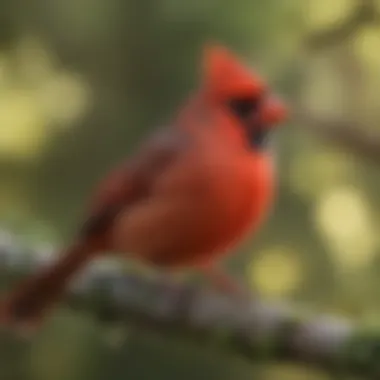

Overview of the Topic
Birds present in our neighborhoods are more than just colorful spots flitting through the trees. They play critical roles in our local ecosystems. From controlling insect populations to facilitating pollination, these feathered inhabitants contribute to environmental stability in ways that often go unnoticed. Exploring this avifauna helps in understanding the delicate balance of nature right outside our doors.
In the backdrop of rapid urbanization and environmental change, understanding local bird populations becomes vital. Our neighborhoods reflect a microcosm of larger ecological shifts, where various species adapt, struggle, or thrive. By shedding light on their behaviors and roles, we can appreciate what these birds signify in terms of biodiversity and sustainability.
Current Status and Challenges
The current state of local birds is a tapestry of resilience and fragility. Many bird species have evolved alongside humans, adapting to urban life with remarkable ingenuity. Common species like the American Robin or the House Sparrow have expanded their ranges, finding homes in the nooks and crannies of our cities. However, these successes mask significant challenges.
- Habitat Loss: Urban development often leads to the destruction of critical habitats. Green spaces like parks and gardens are replaced with buildings and concrete, diminishing the resources birds depend on.
- Pollution: Cities are rife with pollutants that affect air quality and water sources. Chemical run-offs can harm nesting sites, while noise pollution disrupts communication among species.
- Climate Change: Shifts in weather patterns can lead to mismatched breeding seasons or availability of food sources.
These challenges put many species at risk. According to certain studies, populations of migratory birds have faced drastic declines, prompting scientists and conservationist to sound the alarm.
Sustainable Solutions
The journey towards a healthier avian community in our neighborhoods begins with sustainable practices. Recognizing the interconnectedness of urban development and avifauna ensures a more thoughtful approach to living alongside nature. Some successful strategies include:
- Urban Gardening: Creating more green spaces to cultivate gardens can provide essential habitats for birds. Planting native species supports local insects, which in turn becomes a food source for birds.
- Bird-Friendly Architecture: Implementing designs that minimize collision risks can help protect birds in urban areas. Features like bird-safe glass and reflective surfaces can significantly lower accidental deaths.
- Citizen Science Projects: Engaging the community through bird counts and monitoring programs can foster a greater understanding of local species. These initiatives not only raise awareness but also gather valuable data for researchers.
Successful examples from cities like Melbourne and San Francisco illustrate the power of community-based approaches to enhance biodiversity in urban settings.
Impact and Importance
The repercussions of understanding our local avifauna extend far beyond mere observation. When communities become aware of their role in preserving bird populations, it fosters a sense of stewardship toward the environment. Healthy bird populations are indicative of vibrant ecosystems. They contribute to pollination, seed dispersal, and even pest control—benefits that resonate through the human population.
Moreover, engaging in conservation efforts can inspire future generations. As communities work together to address the challenges local birds face, they serve as a model for how environmental issues can be tackled through collaborative effort.
"To see a bird in your backyard is to witness a piece of nature's artwork; to understand its role is to recognize the canvas upon which life is painted."
Thus, the significance of local avifauna lies in their vivid representations of ecological health. Protecting their habitats requires our concerted actions and is a testament to our commitment toward a sustainable future. By investing in their conservation, we ensure that these captivating creatures continue to grace our skies for generations to come.
Preamble to Local Birds
Birds are not just creatures that flutter about our parks or nest in trees—they are vital components of our local ecosystems. Understanding the local avifauna helps us grasp how interconnected life is in our neighborhoods. By observing birds, we gain insight into environmental health, signaling shifts in habitats, and even the impacts of urbanization. Such a focus on local birds can lead to rewarding experiences, enhancing our appreciation of nature. This article aims to delve into the many nuances of birdlife found within local settings, laying the groundwork for deeper exploration.
Importance of Birdwatching
Birdwatching serves multiple purposes beyond mere recreation. It acts as a gateway to understanding biodiversity. When folks engage with their local bird populations, they not only enjoy the serene aspects of nature but also promote awareness surrounding conservation. In a world increasingly dominated by technology, stepping out to witness the antics of a mockingbird or the graceful flight of a hawk can be refreshingly grounding.
Moreover, birdwatching fosters community connections. Local groups often come together, which stitches a fabric of shared experiences. Strangers can bond over the common sighting of a blue jay or share tips on attracting these avian visitors into their yards. Through shared passions, relationships blossom, which ultimately strengthens the resolve for conservation efforts.
Understanding Bird Habitats
Each bird species thrives in specific habitats where food, shelter, and safety intertwine to form a perfect home. Different landscapes, such as wetlands, forests, and urban areas, host various avian species. Understanding these habitats helps observers appreciate how these environments modify the behaviors and lifestyles of birds.
For instance, songbirds often prefer shrubby areas for nesting because such environments offer cover from predators. In contrast, raptors might seek out open spaces where they can spot their prey from afar. Moreover, urban environments can drastically alter habitats, pushing some species to adapt while others sadly decline.
In essence, knowing where birds live and what they depend on unlocks the mystery behind their habits and their roles within ecosystems.
"Birds are indicators of the health of an ecosystem; when they thrive, we know the environment is doing well."
By broadening our understanding of local birds and the environments they inhabit, we not only enrich our own lives but also contribute to broader awareness that encourages conservation actions to protect these valuable species.
Common Birds in My Area
The section on common birds holds great importance in understanding the local avifauna. This part aims to spotlight the various species that share our environment, the roles they play, and the nuances of their existence amidst changing landscapes. Exploring these birds can deepen our appreciation for our surroundings and foster an awareness of how our actions can affect these creatures' lives.
Identifying Local Species
Identifying local bird species goes beyond just knowing their names; it’s about connecting faces to the songs we hear and the silhouettes we see flitting between branches. Often, spotting a new species can ignite a passion for birdwatching and conservation. It’s a thrilling activity that can happen right in one’s backyard or local park. For example, take the American Robin, a staple in many neighborhoods, easily recognized by its bright orange breast and cheerful song. This bird signals the arrival of spring, and many people eagerly await its return.
Being familiar with the characteristics of local birds allows for better observation and encourages a sense of stewardship. Armed with knowledge, one can fill a field guide with notes and sketches, thereby enhancing the birdwatching experience. To identify a species, it's vital to pay attention to their size, colors, and shapes, as well as their behaviors and habitats.
Characteristics of Local Birds
Physical Attributes
When discussing physical attributes, one must consider the distinct features that set birds apart in our neighborhoods. For instance, the delicate feathers of a Blue Jay are not just for show; they play roles in insulation and flight capabilities. A bird's coloration can be a survival tactic, with certain hues helping species camouflage in diverse environments.
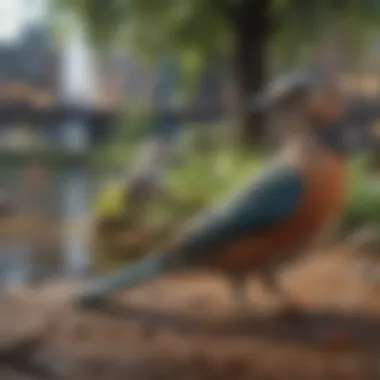
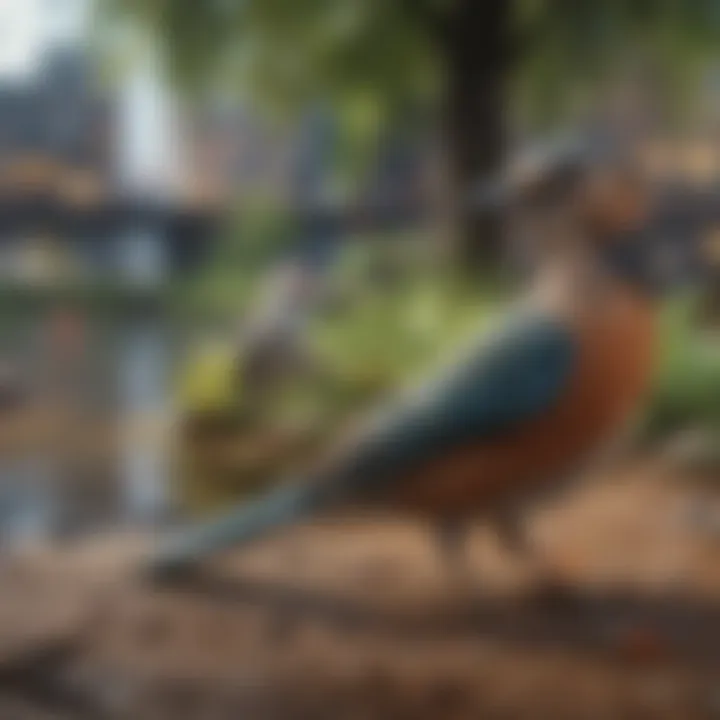
A premier example is the House Sparrow, which possesses muted browns and grays, allowing it to blend seamlessly into urban settings. This adaptation provides protection from predators and enables them to thrive near human habitation. Highlighting these physical traits is beneficial since understanding them can help locals identify birds easily and appreciate their unique contributions to the ecosystem.
Behavioral Traits
Behavioral traits of these birds reveal a lot about their survival strategies. Take, for example, the resourcefulness of the Common Grackle, known for its clever foraging techniques. These birds often appear in flocks, exhibiting coordination and a social structure that merits observation. This behavior isn’t just intriguing; it reflects a practical approach to finding food and avoiding danger.
Something unique about the Northern Cardinal is its territorial singing during spring, a vocal display that also serves to attract mates. Such traits not only add charm to our gardens but also indicate the health of local ecosystems. By highlighting these behaviors, the reader can gain insights into how different species interact with their environment.
Vocalizations
Vocalizations are another captivating aspect of local birds that provide insights into their lives. Each species has a distinct song or call that serves various purposes, from attracting mates to asserting territory. The melodious warbles of the Song Sparrow, for example, fill the air in many neighborhoods and can be interpreted as natural symphonies that mark the changing seasons.
Remember the distinctive call of the Mourning Dove? Its gentle cooing serves to reassure mates and can be a soothing backdrop during warm evenings. These vocalizations not only bring life to the environment but also provide birdwatchers with an auditory clue to identify species by sound alone. Appreciating these calls can deepen the connection one feels towards nature and motivate efforts towards conservation.
Connecting with local birds is more than a pastime; it cultivates a sense of responsibility towards the environment and inspires stewardship of these vital species.
Recognizing the common birds in our neighborhoods fosters an educational journey. It sheds light on their vital roles while encouraging more individuals to engage in birdwatching as a means of connecting with nature.
Seasonal Changes in Avian Populations
Understanding seasonal changes in avian populations is akin to unraveling a large tapestry woven from the threads of nature. Each bird that flits across our skies brings with it a narrative of adaptation, survival, and ecological interdependence. These changes can significantly impact local ecosystems, influencing not just the birds themselves, but their surroundings, too. By examining these seasonal shifts, we uncover the intricate dance of life that defines our neighborhoods and enhances our appreciation for local biodiversity.
Migratory Patterns
Migration is more than just a seasonal trek; it represents the instinctual rhythms of life tied to weather, food availability, and breeding. Birds undergo remarkable journeys, often traveling thousands of miles, reminding us of their resilience and adaptability in face of environmental changes.
Winter Visitors
Winter visitors come from typically colder areas as they seek milder climates and food sources. Their presence adds a dynamic flavor to our local birdwatching experiences. For instance, species like the Snowy Owl or the Short-eared Owl are commonly spotted towards the end of fall and through winter in various regions. One key characteristic of these winter visitors is their striking plumage, often designed for camouflage against the snowy backdrop.
While these birds can be a joy to observe, their arrival is crucial for ecological balances. They help check local rodent populations, contributing to pest control naturally. Nonetheless, they also face challenges, such as competing for resources with resident birds who may become territorial. This dynamic push and pull among species adds depth to the ecosystem conversation, making it a popular topic in local conservation discussions.
Summer Breeders
In contrast, summer breeders return for a completely different reason: they are here to mate and raise young. Species like the American Robin and Eastern Bluebird are common sights, especially as the weather warms up. Their key characteristic is the intricate behaviors displayed during courtship and nesting. Summer breeders often exhibit vibrant plumage that serves not just as decoration, but as a showcase of fitness to potential mates.
As summer wanes, these birds play essential roles in seed dispersal, promoting plant diversity and resilience in local ecosystems. However, they also face pressures such as habitat destruction and climate shifts that can disrupt breeding cycles. Thus, voices advocating for summer breeders often lead community initiatives focused on habitat preservation and enhancement.
Breeding Seasons
Breeding seasons mark periods of fervent activity in local avifauna, characterized by courtship displays, nest-building, and hatchlings chirping away in anticipation of a meal. The cycle of breeding not only tells us about the resilience of avian species but also about the health of the ecosystems they inhabit. The variations in timing and behavior across different species illustrate the delicate balance that sustains life in our neighborhoods.
"Breeding seasons are a testament to the adaptability of birds, showcasing their strategies for survival amid ever-changing environments."
In summary, seasonal changes in avian populations, influenced by migratory patterns and distinct breeding seasons, are central to understanding our local ecosystems. Observing these shifts not only enriches our birdwatching experiences but also urges us to ponder broader ecological implications and conservation efforts. This knowledge fosters a greater connection to the environment and highlights the necessity of safeguarding the diverse threads that make up our local avifauna.
Role of Birds in the Ecosystem
Understanding the role of birds in the ecosystem is crucial for appreciating the delicate balance that exists within our local environments. Birds serve as integral links in food webs, contributing to various ecological functions that ensure sustainability and health of habitats. They interact with the environment in profound ways, so recognizing this interplay can bolster conservation efforts and inform local actions.
Pollination and Seed Dispersal
Birds play a pivotal role in pollination, which is the transfer of pollen from the male part of flowers to the female parts, enabling plants to reproduce. Various species, such as hummingbirds and some thrushes, are known for their ability to pollinate a range of flowering plants. This naturally encourages biodiversity, which is essential for resilient ecosystems.
Numerous trees and shrubs rely on birds for seed dispersal. When birds eat fruits or seeds, they often travel significant distances before digesting them or excreting them intact. This method effectively scatters plant species across the landscape, fostering new growth in diverse settings. For instance, the American Robin consumes berries and helps spread the seeds of plants like holly and mulberry, which might otherwise struggle to propagate in urban environments. In this way, birds contribute directly to forest regeneration and ecosystem resilience.
"Birds are the messengers of nature, bringing life to the landscape through their simple act of feeding."
Controlling Insect Populations
Another compelling aspect of avian contributions is their role in controlling insect populations. Many birds are natural pest managers, feeding extensively on insects, which can otherwise proliferate rapidly in local ecosystems. Species like the Purple Martin and Barn Swallow are known for their voracious appetites for insects, particularly mosquitoes and flies. This natural pest control aids farmers and gardeners alike, reducing the need for chemical interventions that can harm the environment.
In some cases, birds adapt their feeding habits with the seasons and availability of food. For example, during spring and summer, you may notice increased activity amongst insectivorous birds as they feed their young. Their hunting helps maintain balanced populations of their prey, contributing to healthier ecosystems. Practical examples include the ability of Chickadees to lower insect numbers significantly during the breeding season, which can lead to increased plant growth and diversity in the area.
Our local avifauna, thus, serves not only as picturesque elements of our neighborhoods but also as essential partners in maintaining the health and diversity of our environment.
Threats to Local Bird Populations
Understanding the threats faced by local bird populations is crucial for those who wish to preserve and enhance biodiversity in our neighborhoods. These threats not only affect the birds directly but also ripple through the ecosystem, impacting other forms of wildlife and even human communities. Urbanization and climate change stand out as two of the main culprits disrupting the delicate balance that local ecosystems depend on.
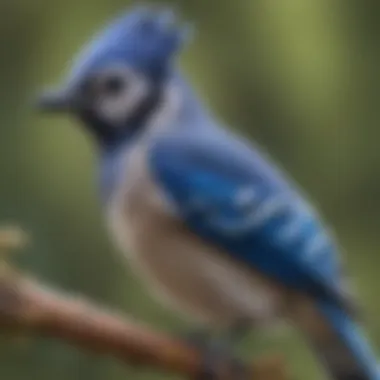
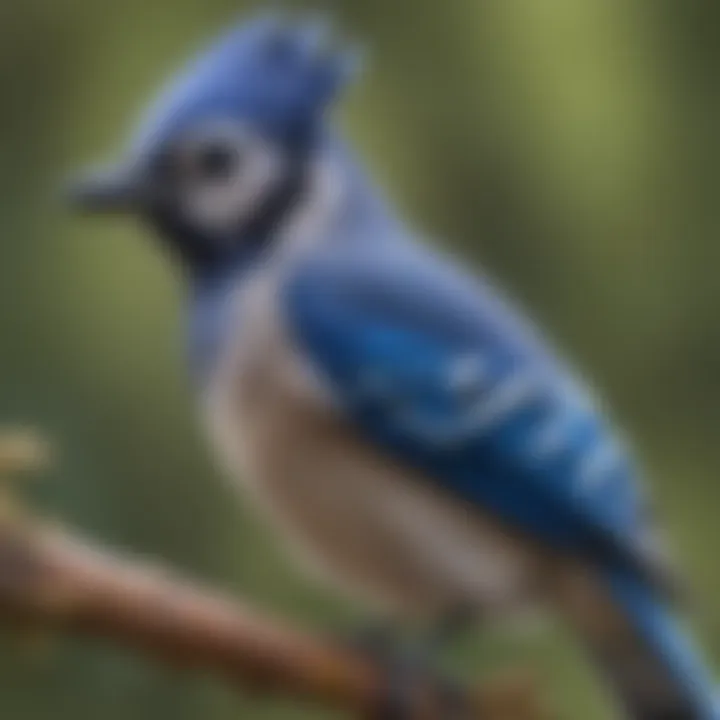
Impact of Urbanization
The expansion of urban areas has plummeted a variety of bird species into precarious situations. Cities often become inhospitable environments for birds due to habitat loss and the creation of barriers such as roads and buildings. Here’s a closer look at the fare share of issues:
- Habitat Fragmentation: As more lands are developed for housing or commercial spaces, birds lose their natural habitats. This separation can make it difficult for birds to find food, mates, or nesting sites.
- Increased Predation: Urban areas also tend to harbor more predators, such as cats and raccoons, which are drawn to the plentiful food sources in human settlements. Such predators can severely impact smaller bird populations, leading to a decline in their numbers.
- Light Pollution: Bright lights from street lamps and buildings can disorient nocturnal birds, like migratory species. When these birds stray from their path, they risk collisions with buildings, which can be fatal. According to studies, millions of birds die this way annually.
This alteration of their environment forces many species to adapt in ways that may not be sustainable long-term.
Climate Change Effects
Climate change introduces another layer of jeopardy for bird populations, affecting weather patterns, food availability, and breeding cycles. As temperatures shift and weather becomes more unpredictable, the challenges facing local birds multiply:
- Shifts in Migration Patterns: Changes in climate can cause some species to migrate earlier or later than their historical patterns. This may lead to mismatches with food availability during crucial nesting periods, impacting chick survival.
- Habitat Destruction: Coastal birds are particularly vulnerable as rising sea levels can inundate important nesting areas. In addition, changes in rainfall patterns affect wetland habitats, putting various avian species at risk.
- Food Supply Instability: Warmer temperatures can impact the life cycles of insects that many birds rely on for food. If birds can’t adapt to these changes quickly enough, they may struggle to find adequate nutrition.
“The relationship between climate and bird behavior is intricate and essential for their survival.”
In sum, the threats posed by urbanization and climate change speak volumes about the fragility of local bird populations. Conservationists and communities alike must be diligent in fostering environments that protect these avian residents, ensuring that future generations continue to enjoy the rich biodiversity that surrounds them. Through local initiatives and global awareness, there's a chance to positively affect these threats and advocate for the survival of our feathered friends.
Conservation Efforts for Local Birds
Conservation efforts aimed at protecting local birds hold immense significance in safeguarding biodiversity and ensuring that ecosystems continue to thrive. Birds are not merely charming elements of our local environment; they play a crucial role in various ecological processes such as pollination, seed dispersal, and pest control. By focusing on conservation, communities can benefit in several ways, from enhancing local aesthetics to promoting ecological balance.
One pressing need for these conservation initiatives is the alarming rate at which bird populations are declining worldwide. Factors such as habitat loss, climate change, and increased human activity have led to significant threats against our feathered friends. Therefore, it is imperative to foster awareness and mobilize efforts at both community and legislative levels to protect these vital species.
Community Initiatives
Community-led initiatives can be powerful tools for bird conservation, engaging local citizens in efforts that directly impact their surrounding wildlife. Many neighborhoods have witnessed the establishment of various programs designed to increase awareness and enhance local habitats for birds. Here are a few examples of such initiatives:
- Bird-Friendly Planting: Local gardening groups often encourage residents to use native plants in their yards. Native plants provide essential food sources and nesting sites for birds. By planting these species, communities can create mini-ecosystems that sustain local wildlife.
- Habitat Restoration Projects: Engaging community members in programs that restore degraded habitats is vital. A simple clean-up of parks or even the replanting of trees can significantly impact local bird populations. People gaining hands-on experience will tend to foster a deeper appreciation for their local avifauna.
- Educational Workshops: Many communities host workshops focusing on birdwatching and identification. These sessions offer valuable insights into local bird species, their behaviors, and their needs, thereby empowering individuals to take supportive actions in their backyards.
By participating in these initiatives, individuals learn not just about bird species but also about the broader implications of conservation. It's a ripple effect where one person’s interest can inspire a whole community.
Legislation and Policies
On a broader scale, effective legislation plays a significant role in ensuring the well-being of local bird populations. Governments at various levels can enact laws that directly or indirectly protect avian habitats and populations. Important aspects of these legal frameworks include:
- Protected Areas: Establishing protected areas such as national parks and nature reserves safeguards critical bird habitats from development and pollution. These areas also serve as sanctuaries for species that are struggling to thrive in more urbanized environments.
- Wildlife Protection Acts: Enforcing laws designed to protect endangered and threatened bird species is essential. Regulations that prohibit hunting or the capture of specific birds help bolster dwindling populations.
- Incentives for Green Practices: Providing incentives for sustainable urban planning encourages the integration of green spaces in city design. Policies promoting bird-friendly architecture, such as bird-safe glass or creating nesting sites on buildings, help mitigate the dangers posed by urban environments.
Legislation must evolve in response to changing ecological conditions, always striving for the common goal of sustaining local avian populations.
By working together through community initiatives and supporting robust legislative measures, we can create a brighter future for our local bird populations and, in turn, enhance our environment overall.
Tips for Birdwatching in Your Area
Birdwatching is a delightful way to connect with nature and understand the delicate balance of our ecosystems. Engaging in this hobby can immensely enhance your appreciation for local avifauna. Knowing how to observe birds effectively can transform a mundane walk into an extraordinary experience. By mastering some tips, you can quicken your learning curve and better appreciate the beauty and behaviors of various bird species.
Essential Gear for Birdwatching
Having the right gear can make a world of difference in your birdwatching experience. While you don’t need to break the bank, certain tools are more than welcome. Here are some essentials:
- Binoculars: A solid pair is vital for observing birds from a distance without disturbing them. Look for binoculars with a wide field of view and good light-gathering capabilities.
- Field Guide: An up-to-date field guide specific to your area can be an invaluable resource. Be it a physical book or an e-book, having images and descriptions helps in accurately identifying species.
- Notebook or Bird Journal: Documenting sightings can deepen your understanding. Include details about the bird's appearance, behavior, and the location. It’s not just about listing; it's about engaging with your observations.
- Camera: For those who wish to capture their findings, a camera with a good zoom can freeze moments that tell several tales. But remember, it’s crucial not to disturb the birds while snapping photos.
- Comfortable Footwear: Whether you’re hiking in thick woods or strolling through your local park, comfortable shoes are essential for long periods spent outdoors.
Equipping yourself thoughtfully can enormously enhance your chances of spotting something special. It’s like rolling with the right dice—your observation success rate just might skyrocket.
Best Times to Observe Birds
Timing is everything when it comes to effective birdwatching. Some common guidelines can help optimize your trips:
- Early Morning: Birds are most active during the early hours, starting at dawn. This time of day presents countless opportunities to observe various species as they forage, sing, or chase after mates.
- Late Afternoon: The hours leading up to sunset often see increased activity as birds prepare for night. This time can also be quite fruitful, especially in wooded areas.
- During Migration Seasons: Pay attention to seasonal migration periods, typically during spring and fall. You may spot species that generally do not live in your area, adding excitement to your birdwatching adventures.
- Post-Rain: After rainfall, birds often become more visible as they seek shelter and food. The environment also gets refreshed, making it lively with activity.
When planning your birdwatching outings, clarity about when to go can yield a rich tapestry of avian wonders. Just like listening to the whispers in the wind, knowing the patterns of local birds enhances your relationship with them, creating a harmonious bond with nature.
"The bird does not sing because it has an answer. It sings because it has a song." – Chinese Proverb
By integrating these tips into your birdwatching routine, you’re not just looking; you are experiencing, learning, and connecting with the world around you.
Utilizing Technology for Bird Identification
In an age where technology permeates our daily lives, its integration into birdwatching has revolutionized how enthusiasts interact with avifauna. Understanding birds in our neighborhoods has been remarkably enhanced by various technological tools. These tools not only simplify the identification process but also foster a deeper appreciation for local ecosystems.
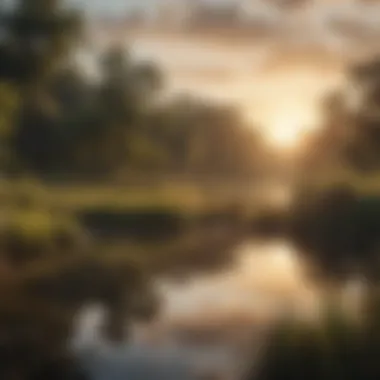
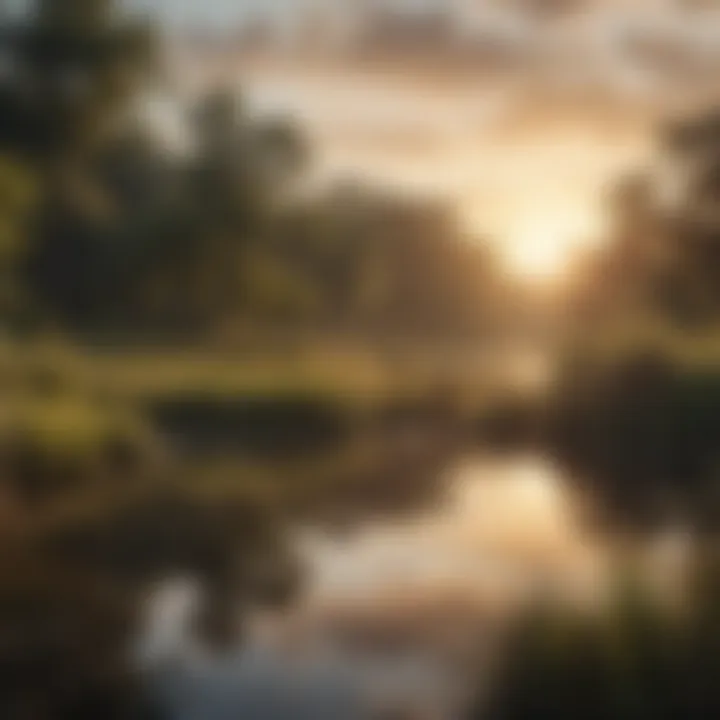
The use of technology, particularly through mobile applications and online resources, assists both seasoned birdwatchers and new enthusiasts in identifying species quickly and effectively. The benefits are manifold:
- Instant Identification: With just a few taps on a screen, one can receive immediate feedback on potential bird species.
- Rich Information: Many apps provide detailed information, including habitat preferences, behaviors, and vocalizations, empowering users with knowledge.
- User-Friendly Interfaces: Unlike traditional field guides that may overwhelm a beginner, technology—often featuring streamlined designs—makes the learning curve more manageable.
- Community Engagement: Digital platforms often have built-in communities encouraging sharing and discussion, fostering connections among birdwatchers.
However, there’s an essential consideration when utilizing these resources; while technology can be a fantastic ally, it can also lead to a reliance that diminishes the joy of personal observation and experience.
"Sometimes the real joy is in not knowing and exploring with a fresh perspective, learning as we go."
Consequently, finding the right balance between using apps and engaging in traditional methods of birdwatching can lead to a richer experience.
Apps and Online Resources
The digital age has spawned numerous applications and websites designed to assist bird identification with ease and certainty. Some of the most popular apps include:
- Merlin Bird ID: Developed by the Cornell Lab of Ornithology, it allows users to identify birds using photos and answering simple questions about the sighting.
- iNaturalist: A collaborative platform where users upload photos which can then be identified by experts or the community, creating a rich database of local biodiversity.
- eBird: Another Cornell initiative, this platform enables birdwatchers to log their sightings and contribute to citizen science while discovering bird reports from their region.
By blending cutting-edge technology with awareness of local ecology, these apps serve as a powerful ally in maximizing one's birdwatching experience.
Social Media Communities for Birdwatchers
Social media platforms have emerged as thriving communities where bird lovers convene, share, and learn from each other. Facebook groups dedicated to birdwatching often burgeon with enthusiasts eager to post sightings, photos, and queries. These communities can be motivating spaces where knowledge is exchanged at an astonishing speed.
Platforms like Reddit have dedicated subreddits that cater to birdwatchers, offering a space for discussions ranging from local sightings to migratory patterns. This not only helps individuals stay updated but also creates camaraderie among those with a shared passion. Topics covered can range from the latest birdwatching gear to environmental concerns potentially affecting local species.
Being part of these communities offers several advantages:
- Real-Time Interaction: Answers to questions can often come within hours or even minutes, connecting users from all corners of the globe.
- Diverse Insights: Each member brings unique experiences and knowledge, leading to a richer tapestry of understanding about birdwatching.
- Event Notifications: Many groups share information about local birdwatching events, excursions, and educational opportunities, which can nurture a more active involvement in conservation.
Creating a sense of belonging in these online spaces can motivate individuals to become more active participants in local bird conservation initiatives.
Engaging with Local Birding Communities
Getting involved with local birding communities is essential not just for the enjoyment of the hobby, but for the broader purpose of conservation and awareness. There’s more to this than just spotting species; engaging with others helps cultivate a deep-rooted appreciation of the avian world. By collaborating with fellow enthusiasts, individuals can gain insights into bird behaviors, habitats, and the challenges these creatures face in changing environments.
Being part of a community can serve as a catalyst for personal growth in birdwatching skills. Local birdwatching groups often organize events, such as guided walks or talks with experts, which can be invaluable learning experiences. The social aspect also cannot be overlooked; sharing tips, experiences, and even the occasional 'war stories' about birdwatching can turn a solitary hobby into a vibrant social affair.
Benefits of joining local birding communities include:
- Knowledge Sharing: Community members often possess a wealth of knowledge that can enrich your understanding of local birds.
- Networking Opportunities: Meeting like-minded individuals can open doors to new adventures in birdwatching.
- Group Efforts in Conservation: Many communities engage in initiatives that have a direct positive impact on local ecosystems, making participants feel they are making a difference.
Joining Local Birdwatching Groups
Local birdwatching groups offer a structured way to engage with fellow bird lovers. These groups can be formal organizations or informal gatherings at parks and nature reserves. Becoming a member means having a support system that encourages exploration and shared discovery. Group activities like field trips can significantly enhance one’s birding skills. Being with others often means more eyes watching for birds, increasing the chance of spotting rare species.
Considerations when joining a group include finding one that matches your interests and level of expertise. Some groups focus on educational programs, while others might be more social. The right fit will encourage sustained involvement and foster a desire to learn more. Whether you're a seasoned expert or a novice, there is likely a group to suit your needs.
Participating in Citizen Science Projects
Citizen science projects represent a fantastic opportunity for bird enthusiasts to contribute to real scientific research. These projects often involve collecting data on bird populations, behaviors, and habitats. By volunteering your time, you’re not just observing; you’re becoming a part of the solution. Participation in such initiatives can also yield substantial personal rewards, as you may witness firsthand the effects of conservation work, tracking changes in local bird populations over time.
Participating in citizen science can be as simple as logging your observations on platforms like eBird or joining organized surveys in your local area. Here are some popular citizen science projects you can consider:
- The Great Backyard Bird Count: An annual event that encourages people to count the species in their own backyards over a few days.
- NestWatch: This project monitors bird nesting habits, providing critical insights into bird reproductive success.
- Christmas Bird Count: A centuries-old tradition in the U.S. where community members gather to count all the birds they can see.
Each of these projects allows for meaningful engagement with local bird populations while contributing to larger conservation efforts.
Community participation is crucial in nurturing local biodiversity and ensuring a future where both humans and birds flourish together.
Finale
In wrapping up our exploration of local avifauna, it's clear how vital understanding birds in our neighborhoods is to fostering environmental stewardship. An appreciation for local bird species not only highlights the diversity of wildlife but also the intricate roles these creatures play in maintaining ecosystem balance. From their ecological contributions to the sheer aesthetic pleasure they bring, birds represent a connection to nature that can deepen a community's bond with its environment.
Recap of Local Bird Importance
Local bird populations serve as critical indicators of environmental health. These feathered friends assist in pest control, pollination, and seed dispersal, linking them directly to the vigor of our ecosystems. For instance, the presence of a healthy blue jay population often signifies a balanced habitat, while a decline may signal underlying environmental issues. Moreover, when we engage in birdwatching, we cultivate a greater awareness of the biodiversity surrounding us, thereby nurturing a sense of responsibility toward conservation efforts. That connection with nature can be transformative, encouraging us to step out, observe, and appreciate the avian spectacle that plays out just outside our doorsteps.
Call to Action for Conservation
Understanding the significance of local birds leads us to a pressing call for action. Urban development and climate change continue to threaten bird habitats, and each of us can make a difference. Whether through supporting local conservation initiatives or participating in citizen science projects, small efforts can culminate in substantial impacts. Here are some ways to act:
- Join local birdwatching clubs to connect with like-minded individuals and share your observations.
- Participate in bird counts and monitoring programs like those organized by the Audubon Society.
- Engage in habitat restoration projects, ensuring that native plants flourish and provide shelter for birds.
- Advocate for sustainable urban planning that respects wildlife corridors and natural areas.
It's essential to remember that every action counts. As stewards of the environment, we owe it to our local avifauna to create a world where they can thrive alongside us. Let's commit to protecting the delicate balance of our ecosystems for future generations.
"The birds that sing the loudest are often the ones most dependent on healthy habitats."



